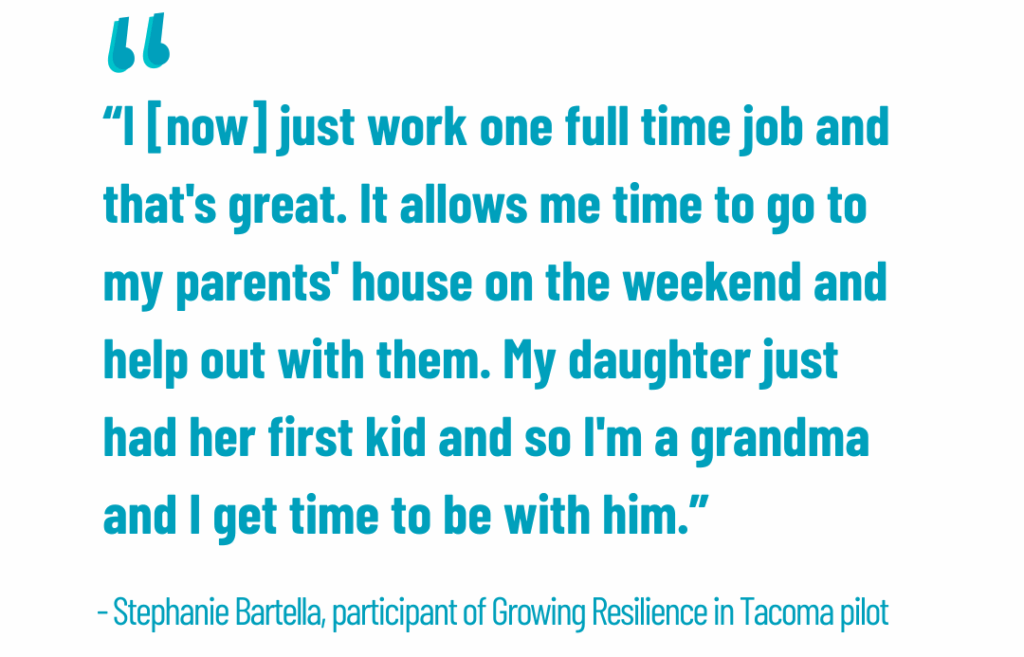What are Direct Cash Transfers?
- Home
- What are Direct Cash Transfers?


By: Gwen Teok
Senior Research & Policy Analyst
If your car broke down tomorrow or your child was sick and you received an unexpected medical bill, would you be able to cover the cost? For more than a third of Americans, the likely answer is “I don’t know.” Only 63% of Americans report having enough savings to cover a $400 emergency, and 46% of Americans don’t have an emergency fund.(1) When families face these unexpected expenses, they often must make impossible trade-offs—keeping a roof over their head, paying bills, or putting food on the table.
Direct cash transfer programs address this problem with a straightforward solution: give people money. With few or no restrictions on spending, these programs allow individuals and families the autonomy and flexibility on how to best meet their most pressing needs.
Direct cash programs already exist in many forms across the United States. For example, the federal Earned Income Tax Credit (EITC) and Child Tax Credit (CTC) programs are considered some of the most effective tools to lift people out of poverty on a national scale. Before the COVID-19 pandemic, in 2018, the EITC and CTC lifted 5.5 million people above the poverty line.(2) This poverty reduction impact was amplified during the pandemic when the federal government temporarily expanded the CTC in 2021. This expansion reduced child poverty by nearly half to a historic low of 5.2%, improved food security, and led to greater investments in children’s education, all without decreasing parental employment. (3)
A growing body of pilot programs in the United States have demonstrated the far-reaching benefits of direct cash programs. In Stockton, California, the Stockton Economic Empowerment Demonstration (SEED) provided 125 residents with $500 per month for two years. Participants reported improvements in financial stability, mental health, and full-time employment. In Denver, the Denver Basic Income Project is testing similar approaches to support unhoused individuals with promising early outcomes.
Closer to home in Washington State, guaranteed income pilots in Tacoma, Growing Resilience in Tacoma (GRIT), and in King County, by the Workforce Development of Seattle-King County, echoed the positive results nationwide. Participants in GRIT and the Guaranteed Income Pilot in King County not only reported greater financial stability but also an average increase in income and were better able to cover emergency expenses—like that $400 car repair or unexpected medical bill.
Impact of Direct Cash Transfers

The nonprofit OpenResearch recently presented to Washington Economic Justice Alliance and our partners in the Washington State legislature. In 2024, they published their findings on the largest randomized controlled trial on basic income in the US, spanning rural, suburban, and urban parts of Texas and Illinois. Check out their detailed findings in the presentation below:
These findings reinforce a clear message: direct cash programs are effective at reducing poverty and increasing well-being for individuals and families.

Citations
- Board of Governors of the Federal Reserve System, Economic Well-Being of U.S. Households in 2023 (Washington: Board of Governors, 2024), https://doi.org/10.17016/8960
- Center on Budget and Policy Priorities. (2022). Policy Basics: The Child Tax Credit, Center on Budget and Policy Priorities. https://www.cbpp.org/research/policy-basics-the-child-tax-credit
- Ananat, E., Glasner, B., Hamilton, C., Parolin, Z., & Pignatti, C. (2024). Effects of the expanded Child Tax Credit on employment outcomes. Journal of Public Economics, 238, 105168–105168. https://doi.org/10.1016/j.jpubeco.2024.105168


